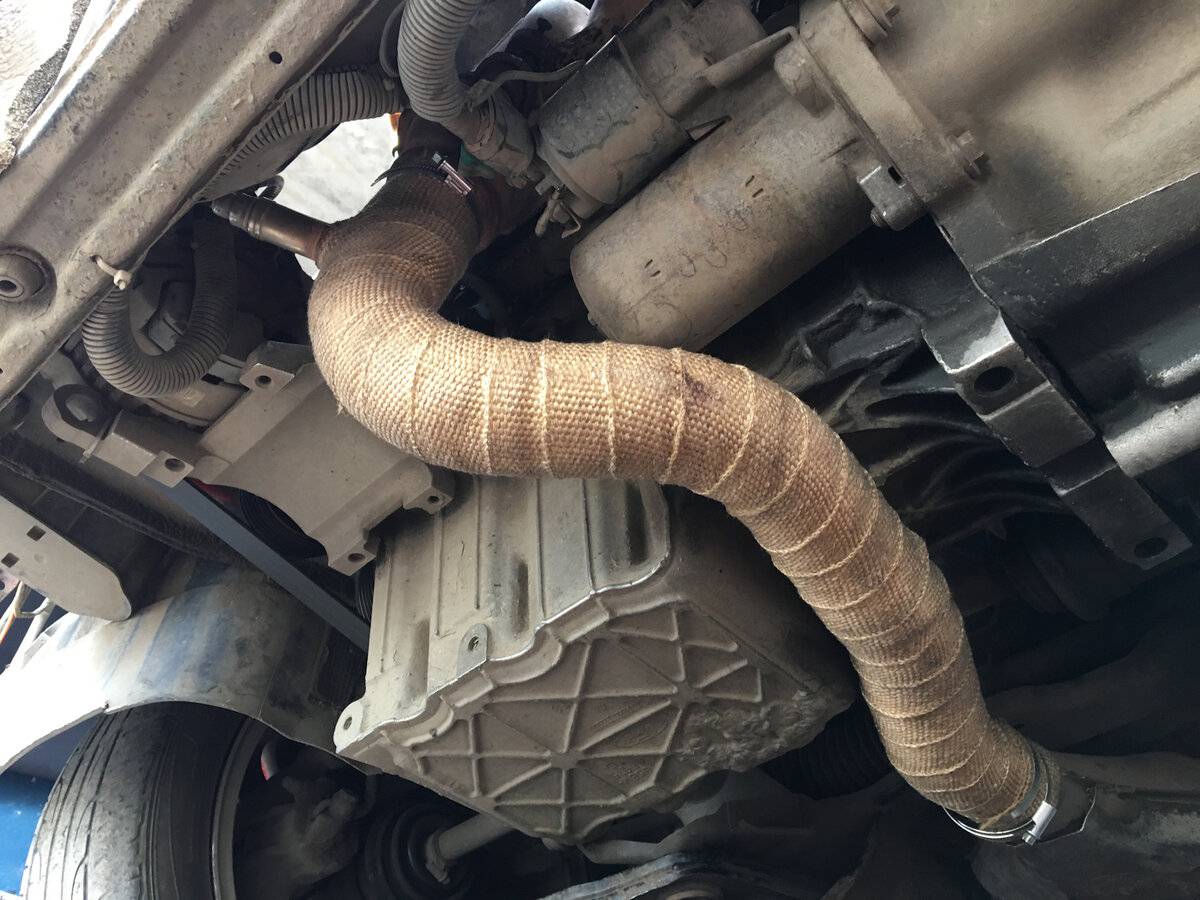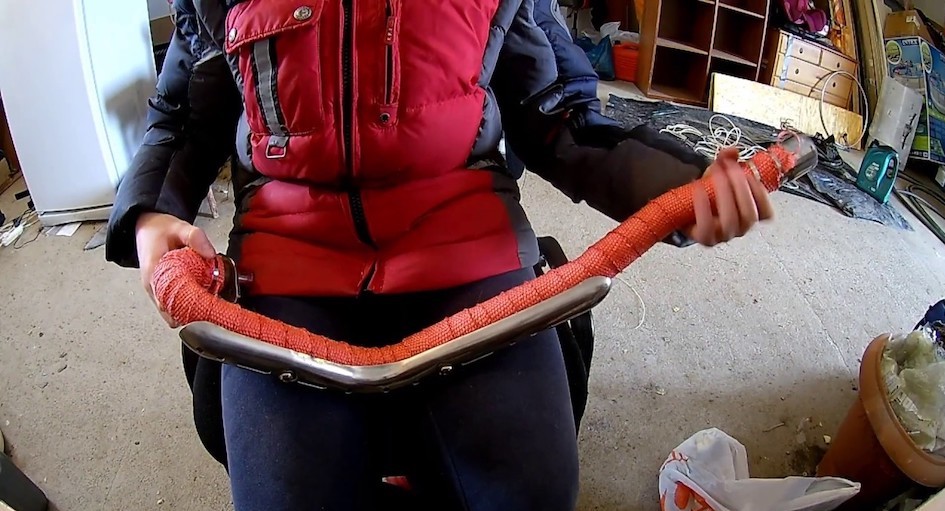
Car muffler winding - practical tips and nuances
Content
If the muffler is burned out, and there is no time to dismantle and wrap it yet, you can temporarily repair the damage to the exhaust system using a heat-resistant sealant. It withstands heating up to 700-1000 degrees, depending on the composition and manufacturer.
Even when driving around the city, the temperature of the muffler of the car reaches 300 degrees. To protect the exhaust system from burning out due to heating and increase engine power, the muffler is wrapped with thermal insulation materials.
Why you need to wind the muffler
Thermal tape wrapping is a popular procedure among car tuning enthusiasts, which allows you to:
- Reduce the volume of the exhaust, which appears due to the installation of additional elements, such as resonators or "spiders".
- Cool the engine of the car by increasing the temperature at the outlet of the car muffler, reducing the load on the engine.
- Change the rattling sound of the tuned exhaust to a deeper and more bassy one.
- Protect the muffler from corrosion and moisture.
- Increase the power of the machine by about 5%. The sharp cooling of gases, caused by the fact that the temperature of the muffler of the car when the engine is running is much lower than inside the collector, makes it difficult for them to exit, forcing the engine to spend part of the resources pushing the exhaust. Thermal tape will not allow the exhaust gases to quickly cool and shrink, slowing down their movement, and thereby save the energy generated by the engine.

muffler thermal tape
Most often, tuning fans use thermal tape specifically to increase power, the rest of the positive effects of winding are just a nice bonus.
How hot is the muffler
The heat inside the exhaust manifold at maximum engine load can reach 700-800 degrees. As you approach the exit from the system, the gases cool, and the car muffler heats up to a maximum of 350 degrees.
Wrapping aids
Due to the high heating temperature of the car muffler, the exhaust pipe often burns out. You can repair a part without welding or add thermal insulation using various winding means:
- A bandage for a car muffler will help close a burnt hole in the exhaust pipe without the use of welding. To do this, the part is removed from the machine, degreased and the damaged area is wrapped with an ordinary medical bandage, well moistened with clerical (silicate) glue.
- High-temperature bandage tape for a car muffler is an elastic strip of fiberglass or aluminum 5 cm wide and about 1 meter long, on which an adhesive base is applied (most often epoxy resin or sodium silicate). The use of the tape replaces the repair in the auto repair shop. With its help, you can repair burnt holes and cracks, strengthen parts damaged by corrosion. Or just wrap the exhaust pipe to protect it from possible damage.
- Heat-resistant adhesive tape for a car muffler is made from aluminum foil or Kapton (exclusive development by DuPont).
- The best option for thermal insulation of the exhaust system is thermal tape.
After hardening, the ceramic sealant “hardens” and may crack due to the vibration of the exhaust system; for repairs, it is better to take a more elastic material based on silicone.
Properties and characteristics
Thermal tape for a car is a strip of fabric that is resistant to high temperatures (it can heat up to 800-1100 degrees without being damaged). The heat resistance and strength of the material is given by the interweaving of silica filaments or the addition of pulverized lava.

Type of thermal tape
Tapes are produced in various widths, the optimal size for high-quality winding is 5 cm. One roll 10 m long is enough to cover the muffler of most machines. The material can be black, silver or gold - the color does not affect performance and is chosen based on its decorative function.
Advantages
If the winding technology is observed, the thermal tape “lays down” better and is more securely attached to the pipe surface than bandage tape or heat-resistant tape. Also, when using it, the temperature of the car muffler is more stable.
Disadvantages
The use of thermal tape has its drawbacks:
- Since the muffler of a car is heated to about 300 degrees and the tape maintains the excess heat, the exhaust system can quickly burn out.
- If the tape is wound loosely, liquid will accumulate between the winding and the surface of the pipe, accelerating the appearance of rust.
- Due to the fact that the temperature of the muffler of the car after wrapping will be higher, as well as from exposure to road dirt or salt, the tape will quickly lose its original color and appearance.
How to wind a muffler yourself
Masters at the service station will undertake to wrap the muffler of the car, but you will have to pay a lot of money for this simple procedure. Thrifty drivers or tuning enthusiasts who prefer to improve the car with their own hands can easily use the heat-resistant tape on their own. For this you need:
- Purchase quality material (cheap no-name Chinese tapes are most often made without following the technology and may contain asbestos).
- Remove the muffler from the car, clean it from dirt and corrosion, degrease it.
- To protect the exhaust system, you can paint the part with heat-resistant paint that is resistant to corrosion before winding.
- To make the thermal tape fit better, you need to soften it with ordinary water, placing it in a container with liquid for a couple of hours, and squeeze it thoroughly. It is recommended to wrap while the tape is still wet - after drying, it will accurately take the desired shape.
- When winding, each subsequent layer should overlap the bottom one by about half.
- The tape is fixed with ordinary steel clamps. Until all the work is completed, it is better not to twist them to the end - you may need to adjust the winding.
- Having reached the end of the pipe, you should hide the tip of the tape under the other layers so that it does not stick out.
The first connection may not work out very well, so it is better to start fastening from the second clamp, temporarily securing the extreme part with tape. When you get used to securely fasten the clamps, and if there is no need to correct the winding of the first node, then you can remove the tape and properly fasten the first clamp.

How to wrap a muffler
The thermal tape should tightly wrap around the muffler, but the bending parts or the junction of the resonator with the downpipe are difficult to wrap alone. This is best done with an assistant who will hold the fabric in difficult places while you stretch and apply the tape.
If you have to work without an assistant, you can temporarily fix the bandage on the folds with ordinary tape, which must be removed after the end of the winding.
Winding thermal tape increases the diameter of the pipe. Therefore, before finally tightening the clamps, you need to “try on” the part in place to make sure that it fits properly.
It should be borne in mind that any changes in the design of the car that are not provided by the manufacturer, you perform at your own peril and risk. Before starting work, think carefully about all the pros and cons of this solution.
After winding, you can be sure that the temperature of the muffler of the car with the engine running will be kept at a stable level, without provoking excessive heating of the engine and not hindering the exit of exhaust gases.
